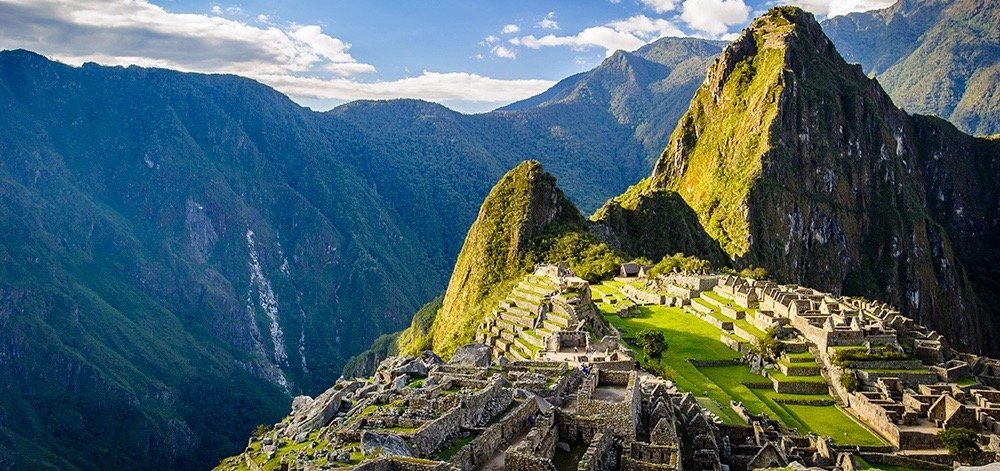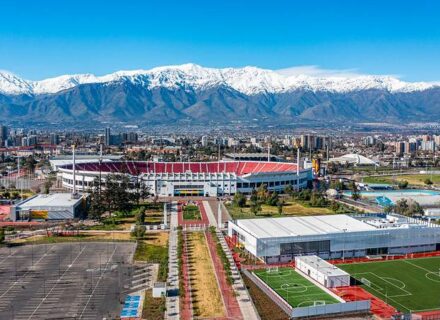The one question till this date I cannot answer, it’s kind of the equivalent of NY vs LA (okay, that one was too easy), or how about Melbourne vs Sydney , São Paulo vs Rio de Janeiro, or even a Madrid vs Barcelona showdown? Don’t even get me started with Messi vs Pelé. By now you know what the question: Which is better/best? I am hoping by the end of this I will finally come to a conclusion.
t is hard to go ahead and start comparing the Lares Trek with the Inca Trail, since they both present similarities, but at the same time, some contrasting features. They both include several kilometres of trekking up and down mountains (did I mention altitude??), and if that doesn’t take your breath away, the stunning scenery will. Yet, where one is more “commercial”, the other rewards the hiker with a more intimate feel of locals living in small towns along its path.
Alright, before we begin to compare them, let’s have a closer look of what our days will be like.
Inca Trail
A full-on, 44-km hike that begins at Km 82 (with an altitude of 2700 metres) and takes you right into the Sun Gate and your first of many glimpses of Machu Picchu.
Let me tell you what “full-on” means: Day 1 usually begins with a moderate 3-4 hour walk to our first stop, lunch. They have porters that are Peruvian lighting McQueens and they will beat you there and when we show up, tents are up, food is cooked and we may even get a massage. Although the last request never actually happened, it was always good to ask no?
Then more walking and out first of many passes. Uphill, about a 45º steep climb, where it’s very intimidating at first, but once you conquer it with your baby steps and deep breaths, you are rewarded by a very picturesque look at the Andes.
We continue and explore our first of many Inca ruins, before eventually reaching our campsite (3000m) where we will sleep in tents. We need all the rest we can before the “big day” that awaits us.
Day 2 usually entails asking yourself why you signed up to do this, where are the llamas to aid us, and how in the pacha mama can those porters run UPHILL? As you challenge yourself, you start gaining momentum for what is the big pass, a 7-km uphill trek known to locals as Warmiwañusca, but we gringos just call it “Dead Woman’s Pass”, at 4210 metres above sea level.
The best thing is that you need to conquer this because the amazing lunch and our campsite (3600m) is waiting downhill, yes after all those Inca steps. Ok, the best thing is definitely looking back and seeing what you just did that morning. It is a tremendous feat and I am very happy to have done that several times.
Now the fun begins with Day 3 (the longest) with not one, but two passes. One at about 3950m and then other at around 3600m (which when you do pass it, you didn’t realize it was one to begin!). A few more Inca ruins to be explored and then eventually, lunch, followed but more trekking. For some people, the most challenging part is yet to come. Those infamous Inca steps that eventually reach Winay Wayna (2650m) and our campsite, which for about $2, you can finally take a much-deserved HOT shower!
Finally, the day we are all waiting for. An early 4am start, to complete a journey that will be engraved in your memory bank forever. We reach the Sun Gate just before sunrise to admire one of the seven wonders, Machu Picchu (2750m).
After a 2km downhill breeze, we reach the restaurant, have a snack, coffee, and then off on our guided tour. We then have free time to climb (yes, some people are still up for it) Huayna Picchu to have a different perspective of Machu Picchu. The day finishes with a bus ride down visit to the town below (Aguas Calientes, 2400m) where we can indulge in dipping into some hot springs or into the local bar. Lastly, we took the train back to Cuzco and what a feeling it is to have a long, hot shower and sleep in a bed after 3 nights camping.
Lares Trek
The “easier” of the two, well that is the rumour anyway when I was approaching the town of Lares (3200m) for the start of our trek. By this time, I have done the Inca trail about 12 times, so I was really looking forward to conquer the Lares. We visited a small town, bought a few snacks and then it hit me: Where are all the tourists?
It was February and I know that the Inca trail is closed due to its yearly maintenance, so I would expect more tourists to be lining up and buying walking sticks and coca leaves. That was not the case. What came as a surprise too was the fact that we had lunch before our first step! Bring it on Lares, if this is any indication of what is to come, I bet I can trek it backwards.
We started our 2.5 hour trek and they told us it would all be uphill. We stopped in some local towns and still, no tourists, just locals living a simple, untouched life. This came as a shock because I didn’t think we would be in the villages.
We continued to climb and climb slowly, effortlessly to reach our campsite for the night, Sondor at 4200m! Wait, isn’t that the same altitude as Dead Woman’s…oh my!
We were told that Day 2 was going to be the longest, toughest and the most picturesque. Hey, look who you talking to? Can anything be worse than Inca’s Day 2? Survey says: “Same Same, but Different”, like they say in Vietnam. We started at 4200m, how much higher are we going? We walked, and slowly climbing up to reach Wacawasi (4520m) and that wasn’t as bad as I expected. Then we descend to reach, according to me, one of most breathtaking views I have ever seen in my life. Situated in a very remote location, this lake shares the same view as the surrounding snow-capped Pumahuanca.
I just couldn’t believe what I have been blessed with, what a beautiful country you are Peru. But there was more trekking involved, and somehow along the way, we descended some more and of course, we just had to climb another 4520m pass. Wayruruyoc wasn’t as bad, because it was a gradual climb that provided plenty of opportunities to admire the views. But again, what goes up, must come down. Fortunately, there were no Inca steps, but it’s still a bit demanding, not so much on your knees, but on your calves. When we reached our campsite (3400m), I was totally blown away by the views and the pristine of this trek. The towns are basically running without any Westernized amenities, and you meet so many local kids that run uphill to wave “hola” to you because we may very be the first tourists they have seen in days. It really touched me because this all came as a surprise, and a good one it was.
Our Day 3 began early and this is the first time we get to visit an ancient Inca ruin while trekking, Pumamarca.
Today was going to be a short day because after our 2.5 hr walk down, we will reach the gorgeous town of Ollantaytambo. Here we get to take the train into Aguas Calientes and check into our hotel! A nice meal, a nice shower and a beautiful journey it’s been so far.
Our Day 4 was another early start due to our request. We boarded the 15-min bus ride up to Machu Picchu to be some of the first people there. And low and behold, we were basically the only ones there around 6:30am.
We had our guided tour and there was still time to climb Huayna Picchu, or even the 2km uphill to the Sun Gate. We boarded the train back to Cuzco and the rest if history.
Comparison
So now that we understand the treks and their Day-by-Day, it’s time for me to start comparing the two. I have to start with the fact that both have great guides and amazing porters, and the food is absolutely lovely on both treks.
In terms of difficulty, I can honestly say the Inca is tougher due to its climbs (some steep, some with steps) and theirs descends (loads and heaps of steps!). But I am not going to underestimate the Lares, which has 2 of 3 passes over 4400m and you’re trekking over 33 km (20.5miles) in honestly 48 hours. The Inca is 44 km (27 miles) in three full days and about 2 hours in the morning of Day 4. But I can say that it’s not about the distance, but the difficulty, and my personal opinion is that Inca is tougher, but not that much tougher than Lares.
You will see more Inca ruins on the Inca Trail vs the Lares, no doubt about that.
You will be amongst 400+ tourists along with the local guides and porters beginning on the trek. They do use different campsites along the Inca trail, but you will most likely be among other groups. The Lares on the other hand, I don’t think I saw another group at all (Feb 2009). So if you want to have a more solitude of a trek, the Lares is your best bet. At the same time, you will come into contact with many locals from the town you will trek thru. On the Inca trail, you will see a few on the first day, then they don’t show up until Aguas Calientes.
So after all of this, the question needs to be answered: If the Incas come out with a calendar saying the world will end in 2013, and one of these treks is on your bucket list, which one would you do? If you are looking for less tourists and more authentic experience, then Lares is your option. However for me, after all my years of traveling and leading tours, people ask me what is one of my favourite things I have ever done, and I answer that the same way I end this.
The moment I rounded the corner at the Sun Gate and caught my first glimpse of Machu Picchu, it was the most uplifting, emotional and heart-stopping moment in my entire traveling life. My hair rose, my eyes got a little teary (I was still macho in Machu ok!) and it is an experience, a journey, that to this day still headlines my memory bank.
Regardless of what you think or decide, one thing we can all agree on is that any of these two treks are a MUST in a traveler’s agenda. You will not regret it, I can promise you that.



